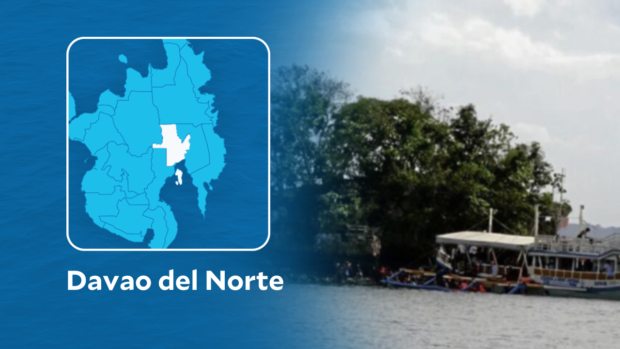Environmental groups warn: Gov’t project to destroy coral reef on Samal Island

INQUIRER FILE PHOTO
DAVAO CITY — Environmentalists warned that fisherfolk communities, who depend on the Davao Gulf for their food and livelihood, would be hit badly by the destruction of coral reefs and marine life if the Paradise Reef on the western side of Samal Island is demolished.
Myla Santos, director of the Ecoteneo, the ecology advocacy of the Ateneo de Davao University (AdDU) and co-secretariat of the Save Samal Reefs Alliance, said this as they called on the government to find an alternative landing site for the Davao City Connector (SIDC) project away from the Costa Marina Beach Resort, near where the reef was located.
“If that bridge is to be built for people, put it in a place where it will not kill marine life and compromise the people who rely on marine life for their food and livelihood,” Santos said.
“The construction of the bridge takes five years; (which means), five years less for our window to address the climate emergency (confronted by the planet). Why make our coastal communities more vulnerable?” she asked.
Paradise Reef is a contiguous reef that stretches on a 300-meter length off the coast of Costa Marina and Paradise Island.
Article continues after this advertisementMarine biologist Dr. John Michael Lacson described Paradise Reef in a video message as a “reef like no other,” as it was still at its healthiest stage.
Article continues after this advertisementSantos said their opposition to the site of the bridge landing and their concern for the coral reefs came out of concern for the communities around the Davao Gulf whose livelihood would be affected.
“The coral reefs (where the fish lay their eggs), when destroyed, will kill the livelihood of fisherfolk. People will go hungry, the crime rate will go up,” she said.
“Couldn’t we connect that? We are in a bad economic situation, our inflation has reached more than six percent, and many of our fisherfolk rely on the Davao Gulf for food and livelihood. Nakakaiyak (It is sad), that they’re making economics as the reason for building the bridge and yet, they are killing the economic base of people and communities who rely on the Davao Gulf for a living.”
Dophins, whales
She posted on the Ecoteneo Facebook page that at least seven dolphins were sighted on June 5 off Paradise Island. The 2018 Survey by the World Wildlife Fund found at least 15 cetaceans in the Davao Gulf, a key biodiversity area that needs a comprehensive framework for conservation and protection.
Among the whales found in the Davao Gulf were Fraser’s dolphin (Lagenodelphis hosei), the Long-snouted spinner dolphin (Stenella longirostris), Short-finned pilot whales (Globicephala macrorhynchus), Sperm whales (Physeter macrocephalus), Longman’s beaked whales (Indopacetus Pacificus), and Dwarf sperm whales (Kogia sima), according to the WWF.
The WWF partnered with the Department of Environment and Natural Resources (DENR) for the project that aimed to establish Marine Protected Area Networks in five sites across the country.
Although whale-watching is already a $2 billion-a-year industry worldwide, whales also play an important part in the marine ecosystem, according to a report by the 28th International Congress for Conservation Biology.
The report cited a growing body of peer-reviewed scientific literature which revealed that cetaceans, particularly, large whales that migrate long distances, enhance marine primary productivity by fertilizing ocean waters with iron-rich feces and circulating (“pumping”) micronutrients that influence the biochemistry of the marine ecosystem.”
“Their large biomass also represents an important and stable repository for carbon dioxide (a greenhouse gas) and upon death, their carcasses contribute to biodiversity and carbon sequestration on the ocean floor,” the report said.
Santos said that the effects on the environment had not been sufficiently considered in the overall plan for the bridge’s construction.
Alternative
Aside from calling for the “realignment” of the bridge to an alternative site to reduce the destruction of marine life, environmentalists are also advocating an increase in the project’s allocation for its environmental cost, Santos said.
In a video posted on YouTube, Dr. Lacson described the Paradise Reef ecosystem as a “garden within a garden,” very rich with hard corals at certain parts and soft corals in other parts.
“The existing landing point would bring into the area a tremendous amount of silt, so that when the tide comes in, it will push the current and propel the silt towards the north, smothering the corals on Paradise Reef,” he said, referring to the chosen landing point of the project along the coast of Costa Marina.
“When this happens, the ecology in the area will change from a coral reef to an algal reef because the top of the coral reef will be covered with silt and on top of that will grow algae and if we do that, we would lose the most precious conservatory of coral reefs and coral reef fish in the entire side of Samal.”
He added that when the bridge is built, trees and vegetation in the area would be cut down, which would result in soil erosion that would also impact the reef.
“If the bridge enters here, they’re going to deforest trees and the vegetation along the coast, so that during the rainy season and when there’s torrential rain, we’re going to have erosion of the soil down into the area, which will also be carried by the tidal shift and will smother the reef. So by the time you have this bridge here, your coral reef will not be the same again, and you will lose the most precious coral reef on the western side of Samal Island,” he said.
RELATED STORIES
Scientists race to prevent wipeout of world’s coral reefs
Is the DPWH killing coral reefs? | Inquirer News